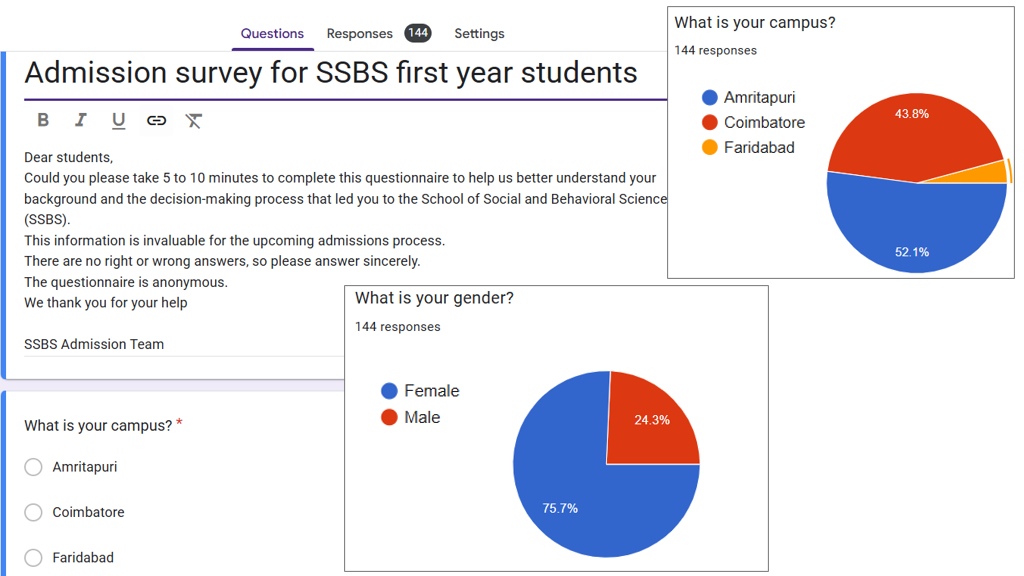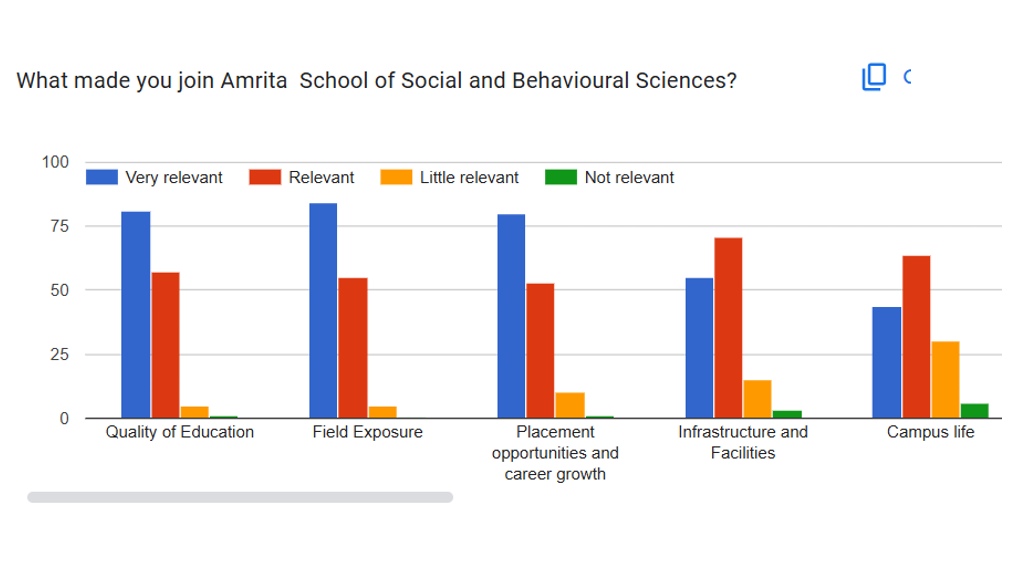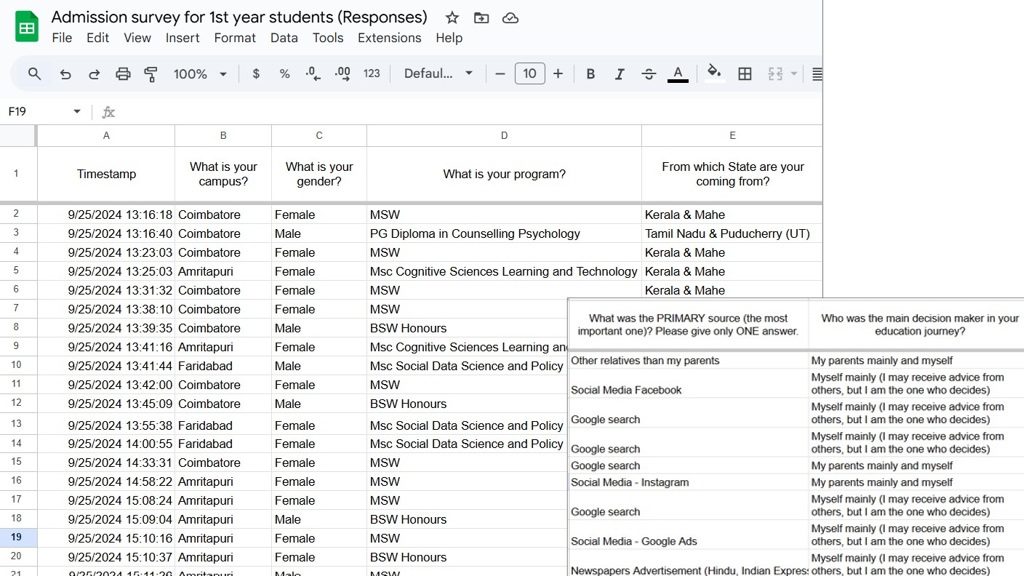Programs
- M. Tech. in Automotive Engineering -Postgraduate
- B. Tech. in Computer Science and Engineering (Quantum Computing) 4 Years -Undergraduate
Amrita Vishwa Vidyapeetham is committed to gender diversity and helping women students succeed in their educational goals. Currently, 42% (+1% compared to last year) of the undergraduate student population is made up of women students.
As a key measure of academic achievement and one of our student success goals we systematically track, monitor and evaluate women application admissions and graduation rates including first-time women students.
The graphs below summarize the application, admission and completion levels for Undergraduate students for the last 6 years:
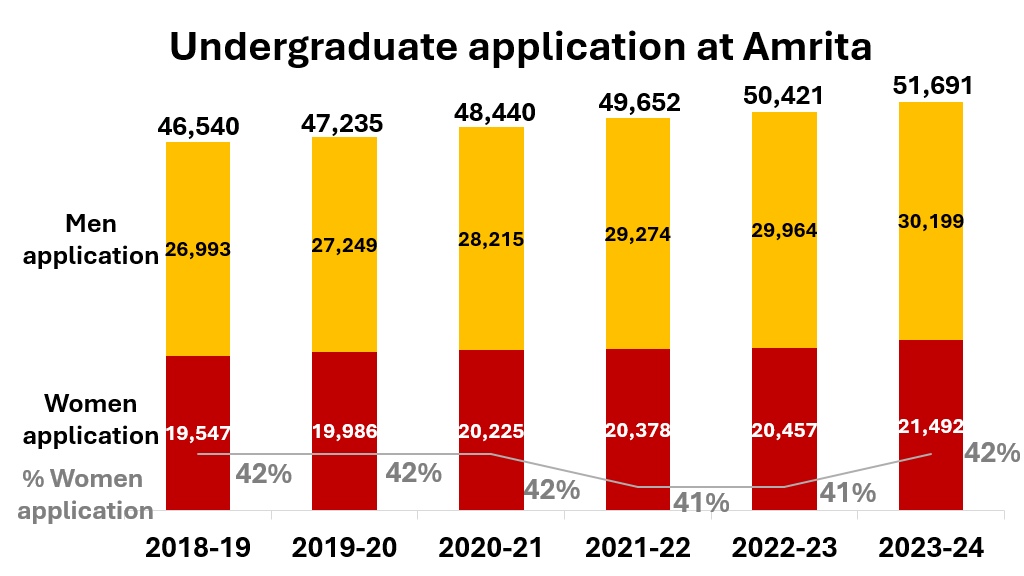
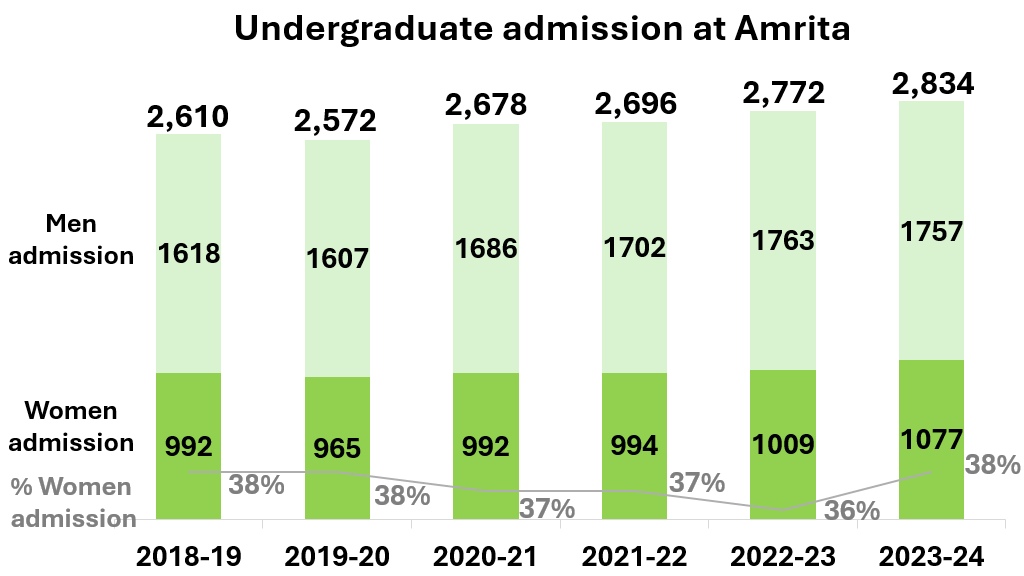
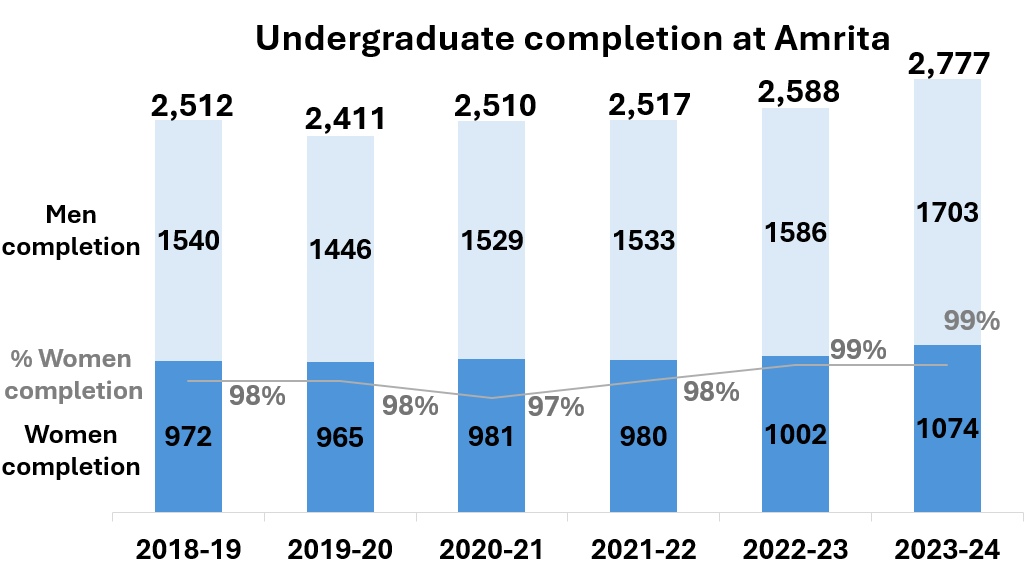
To track women’s applications, Amrita Vishwa Vidyapeetham uses the following method:
Example of an Application Form for the B. Tech. Admission:

Example of an Admission Dashboard for MSW :
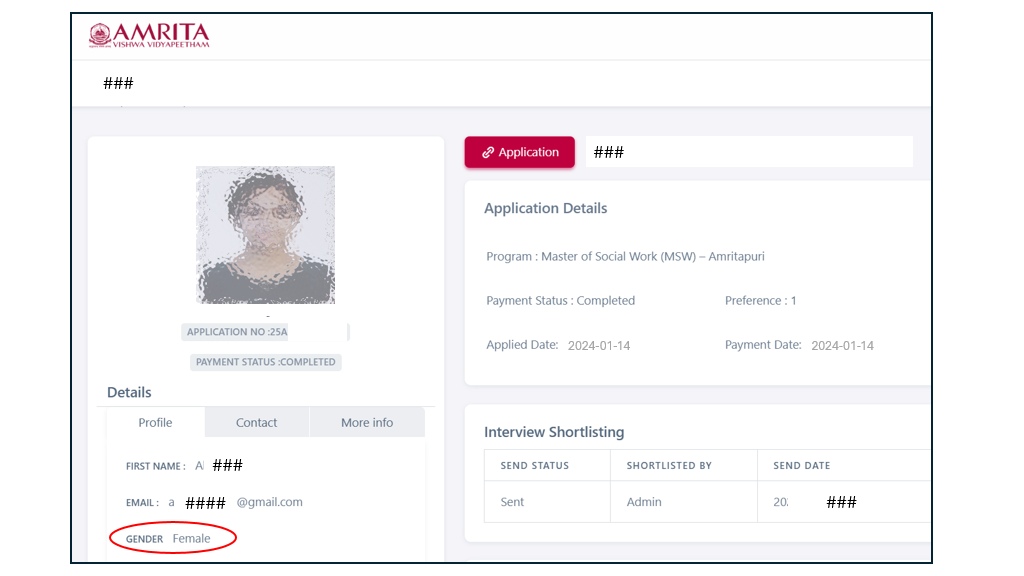
Sample of female applicants registered on the admission portal without application fee payment:
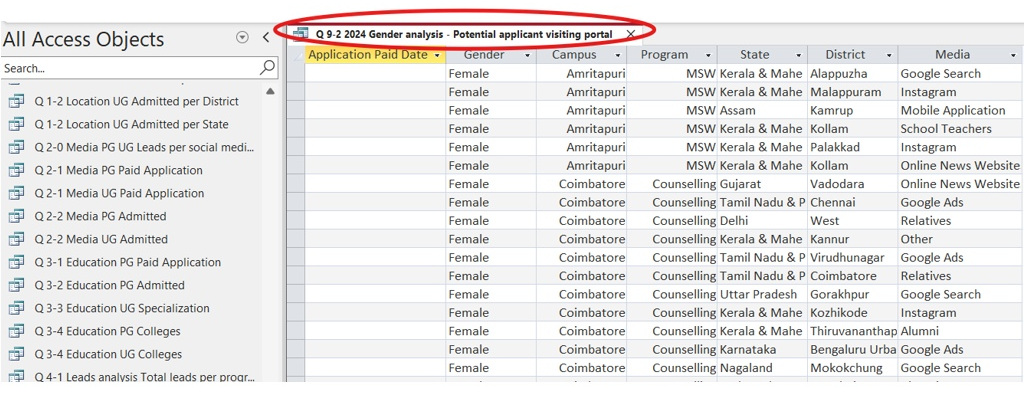
Sample of female applicants registered on the admission portal with completed application fee payment:
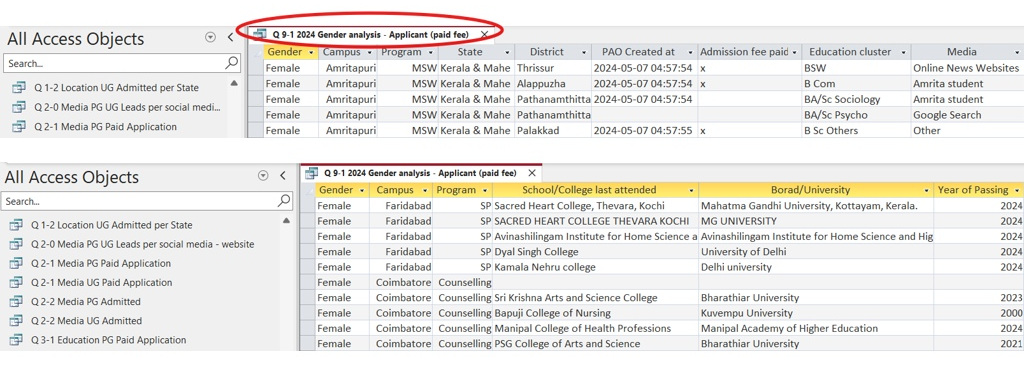
Information collected—such as state and district, age, primary media used, educational background, specialization, previous college or school, and marks—helps the admission head of each school refine the overall admission strategy, including gender-specific approaches
In addition to its current tracking measures, Amrita Vishwa Vidyapeetham is going a step further by organizing global events and gathering best practices from other institutions in India and around the world. This allows us to keep our tracking system aligned with best practices and standards.
In 2023, as part of Civil20 India—the official G20 Engagement Group chaired by the Chancellor of Amrita Vishwa Vidyapeetham—we compiled and published 64 best practices (Udaharans) for the C20 Summit in Jaipur on July 31, 2023. Several of these focused specifically on the systematic tracking, monitoring, and evaluation of women’s access to education. This was the case of an initiative called Manzil, striving to improve adolescent girls’ vocational and economic potential in Rajasthan. The project’s primary strategies include systematic tracking, through the monitoring of enrollment and completion rates via a dashboard to measure impact and drive accountability.

Surveys are an effective way to gather insights on factors influencing women’s access and enrollment decisions. Analysis can be done per cluster of gender to track the difference of behaviour in the application process, understand what attracted them to the university and any challenges they faced during the admissions process. Their insights can help refine recruitment and support strategies.
In 2024, the School of Social and Behavioural Sciences (SSBS) conducted an admission survey among first-year students across all campuses, including SSBS Faridabad which opened in 2024, covering those who had enrolled during the 2023–2024 admission cycle.
